The history of fashion shows from personal couturier to the " Buy " button on Instagram
If you had tried to sneak into a fashion show with a camera in your hand 100 years ago, you would most likely have been thrown out on the street — the latest couturier delights were strictly hidden from the eyes of competitors, and photographers were suspected of "commercial espionage".
If you told a fashion industry worker in the first half of the 20th century that today this exclusive high-end craft would turn into a sparkling stream of gloss, pouring from Instagram live on the heads of a multi-million audience, he would think that you are fantasizing.
From hidden displays for the "high society" to mass accessibility and the democratization of trends, the fashion world has evolved along with society, culture and technology over the past 150 years.
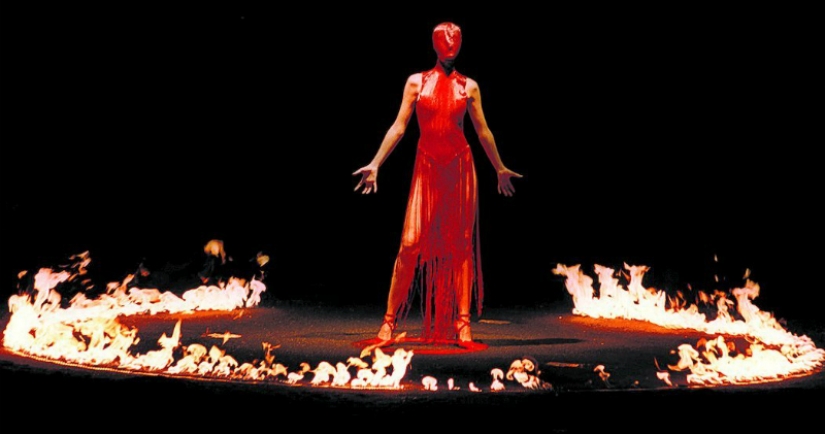
The fashion show today lasts no longer than ten minutes — and this is enough to transport the viewer to another world. The modern fashion show with its grandiose design and theatricality is created in order to plunge everyone present into the vision of the author — fashion designer.
It wasn't always like this — it used to look much more modest. Small shows of Chanel dresses in the intimate atmosphere of Parisian salons in the 1950s can not be compared to the packed show of Karl Lagerfeld at the Grand Palais in 2014.
The main thing that has changed is the scale, namely the budget, production and locations. In just a few decades, the shows have gone from a low-key, private event to a royal-scale entertainment show.
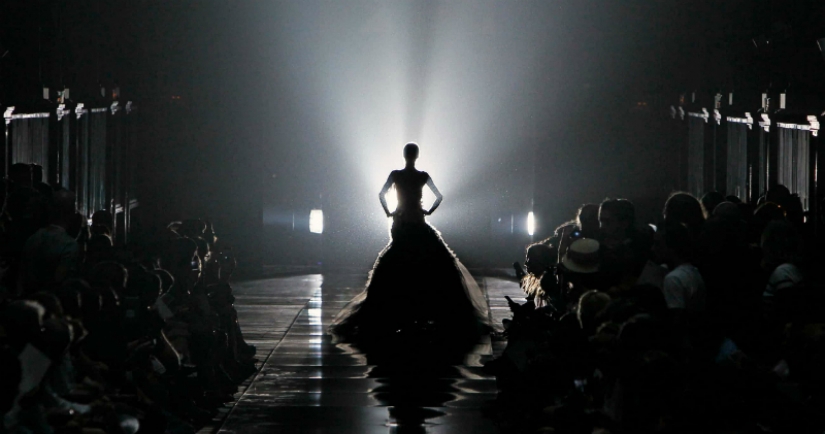
At the origins of high fashion
The first fashion designer who came up with the idea of showing outfits on real people was a Parisian Charles Frederick Worth. In 1860, he organized a fashion show during a horse race at the Longchamp Racecourse, thus establishing a tradition that was continued by other couturiers until the 1930s.
Although it is difficult to call it a show — the models simply flaunted at the event in a secular atmosphere, the idea brought its share of publicity.

Paris, Longchamp Hippodrome-1910
The early years of the XX century were the heyday of fashion "parades" — what is now commonly called fashion shows. British fashion designer Lady Duff-Gordon held regular fashion shows at her Hanover Street salon, calling her models romantic names to make the atmosphere of the event exotic.
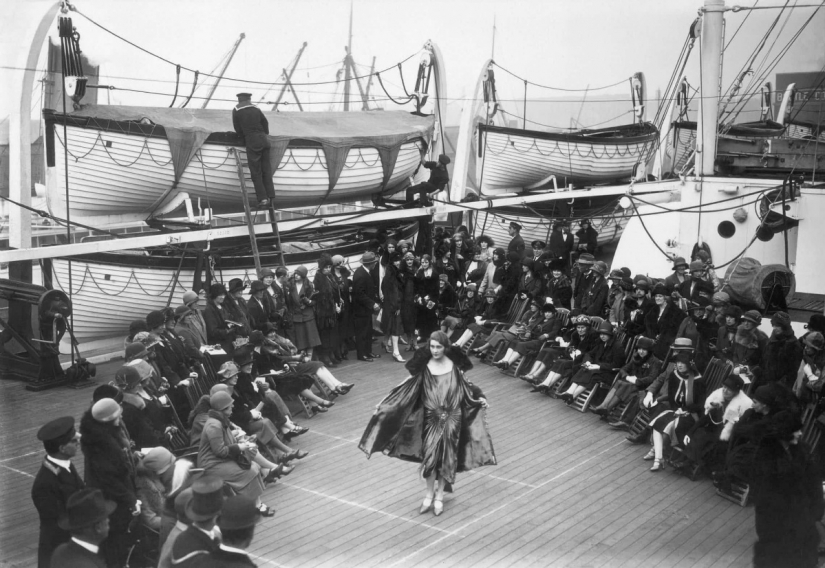
Meanwhile, in Paris, Paul Poiret staged balls where guests could try on the designer's unusual dresses inspired by oriental images.
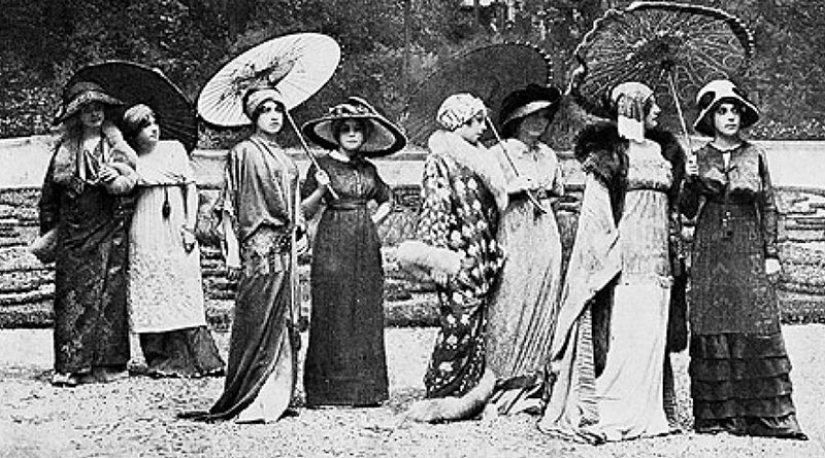
Models of Paul Poiret in Paris-1904
The 20s were the golden age of haute couture in Paris, thanks to the vision of the trendsetters of taste of that time-Coco Chanel, Madeleine Vionnet and Elsa Schiaparelli.
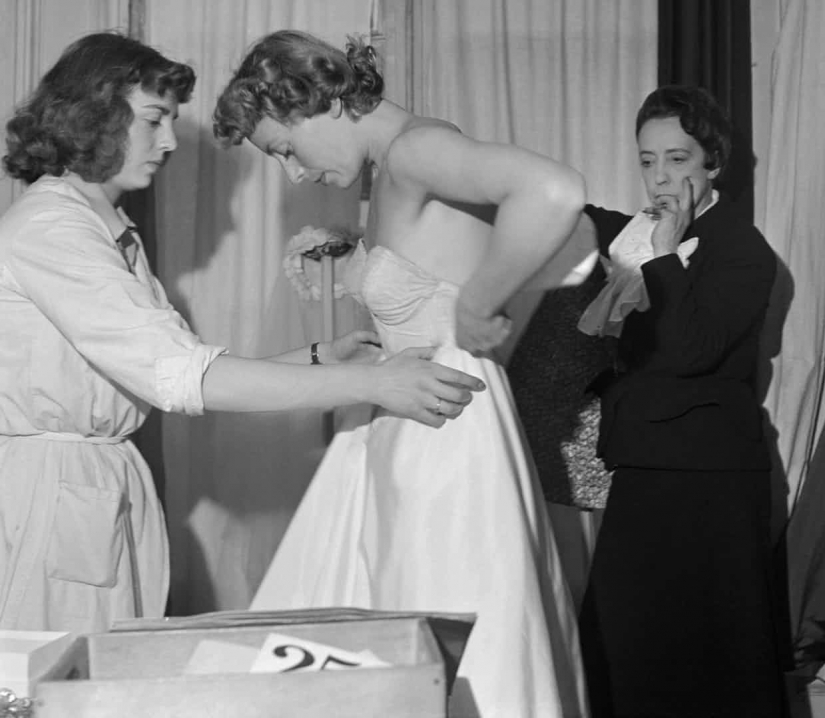
During the shows in the cozy salons of Paris, guests placed orders for dresses on the spot, negotiating with a trusted couturier responsible for maintaining relations with customers

Show in one of the salons of New York — 1925
At that time, in America, despite the hardships of the Great Depression of the 30s, high fashion was also flourishing. And the first walk on the catwalk in New York in 1931 was arranged by Elsa Schiaparelli. Photographers were not allowed to attend this show — the artists made sketches of the collections on paper.
Since the Schiaparelli show, the New York fashion scene has been dominated for many years by designers from Europe. The heyday of American talent happened under tragic circumstances: During World War II, representatives of the American press could not travel to Europe — so local designers had a chance to get into the spotlight.
In 1943, fashion critic Eleanor Lambert helped organize the first New York Fashion Week. Since then, this world-famous event has been interrupted only once in history — on the day of the terrorist attack on September 11, 2001, which fell on the first day of the show.
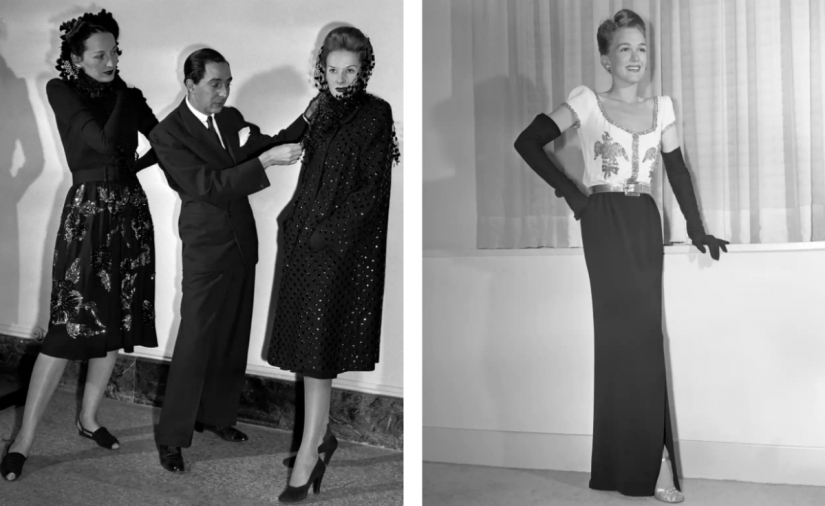
One of the pioneers of American fashion was the minimalist Norman Norell, whose dresses were later worn by Marilyn Monroe
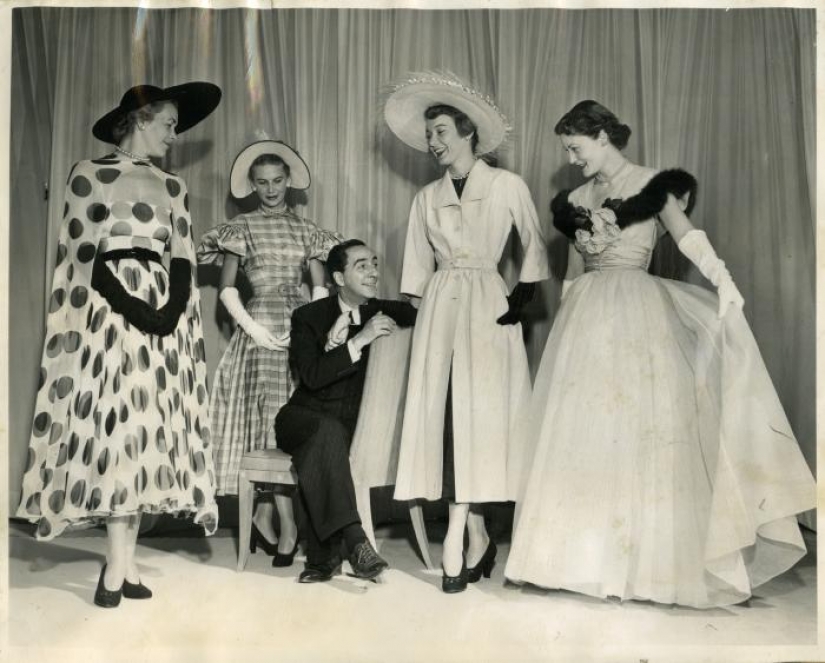
Norell with models at the spring-summer 1949 fashion show
Start over
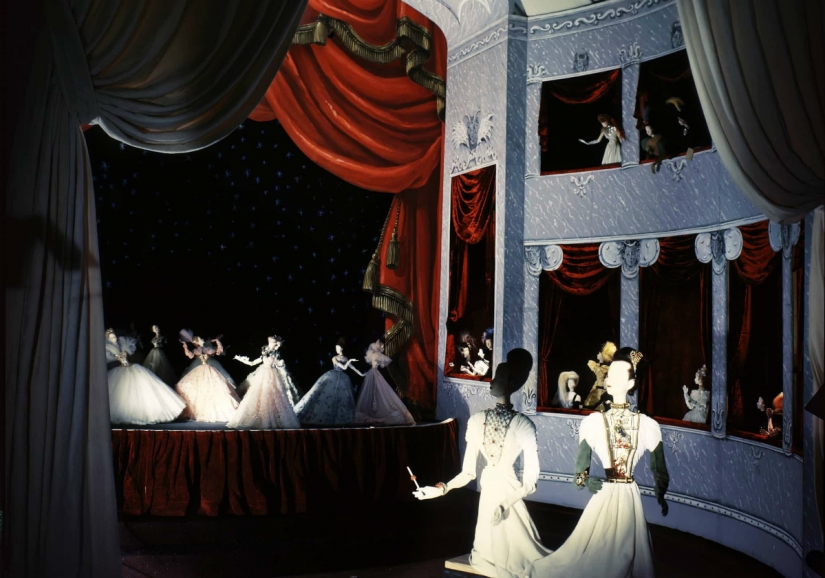
In 1945, the war ended, and Europe was exhausted. France, as a result of the early occupation, remained relatively unscathed, but the fashion industry during this time suffered huge losses — it had to be restored.
The son of the legendary couturier Nina Ricci, Robert, suggested that fashion houses make miniature versions of their works — such an elegant way to present their achievements to the public without wasting a huge amount of valuable material. Such miniature shows became known as the" little theater of fashion " (Le Petit Théâtre de la Mode).
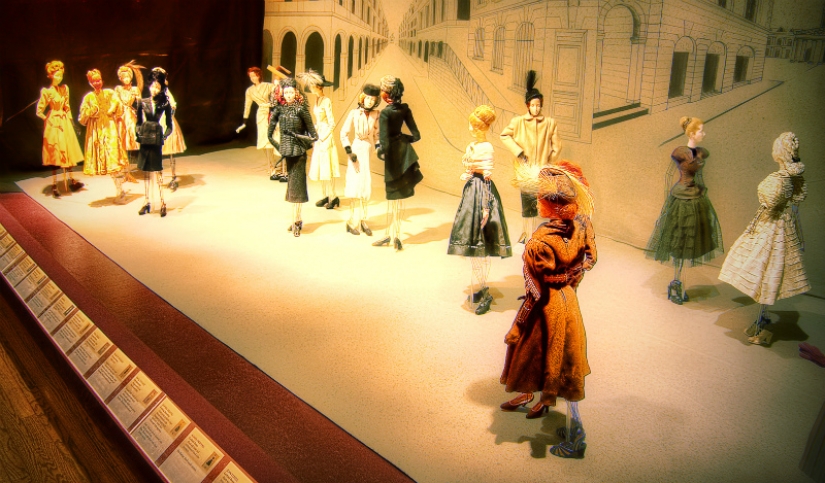
In 1945, 200 mannequins, one-third the height of a man, dressed in miniature outfits by Cristobal Balenciaga and Jeanne Lanvin, were exhibited in the Louvre, and then sent on a tour of Europe. The next year, these same mannequins-already in a new collection — were sent overseas, arranging a kind of fashion show, pragmatically managing the budget.
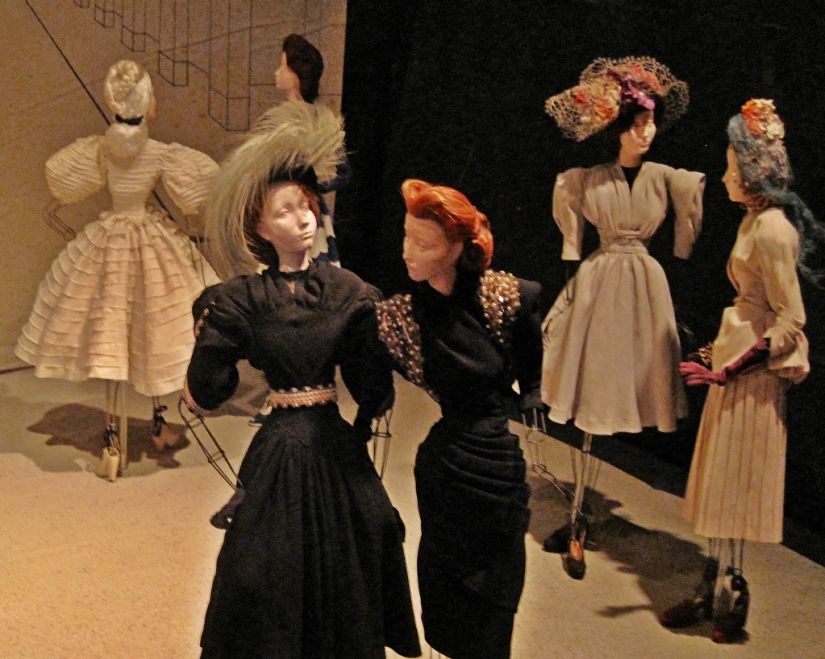
Mannequins from an exhibition held in New York in 1946
New rules
In the pre-war years, haute couture shows were held in cramped salons — the same place where the designer's workshop was located. At the same place, orders were placed for customers who returned to the salon in the next 6 weeks to take measurements. In those years, before the catwalk, the focus was on clientele, not publicity. But soon everything changed.
In 1947, Christian Dior allowed photographers to shoot his first designer collection. The editor of the fashion magazine Harper's Bazaar, Carmel Snow, called the famous collection "The New Look" (The New Look).

From the Dior collection of 1947
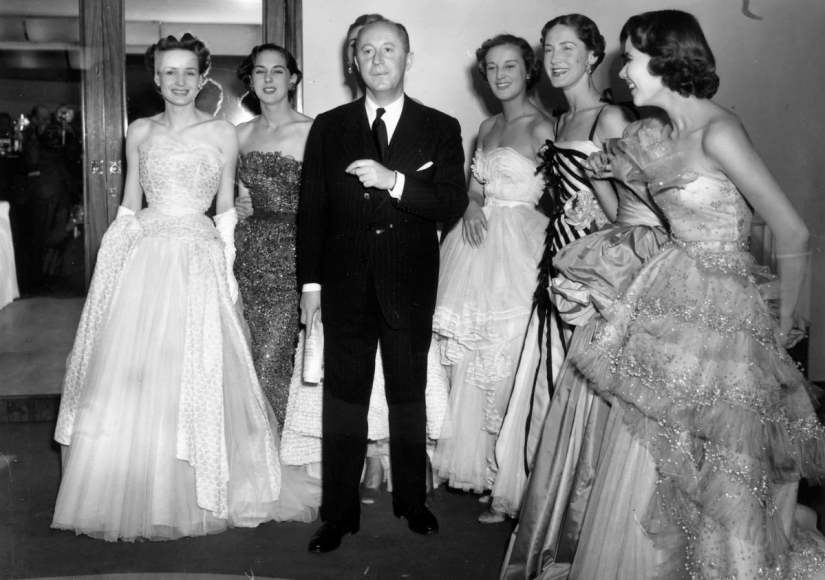
Christian Dior with models
Italy
In Italy, shows began in the 1950s in Florence. Leading fashion houses from Rome, Turin and Milan, including brands such as Simonetta Visconti, Schubert and Emilio Pucci, exhibited their collections in the walls of the grand Sala Bianca Palace.
Organized under the direction of Giovanni Battista Giorgini, these shows were an attempt to compete with the fashion houses of Paris and restore the textile and fashion industry of the Italian ateliers after the war.
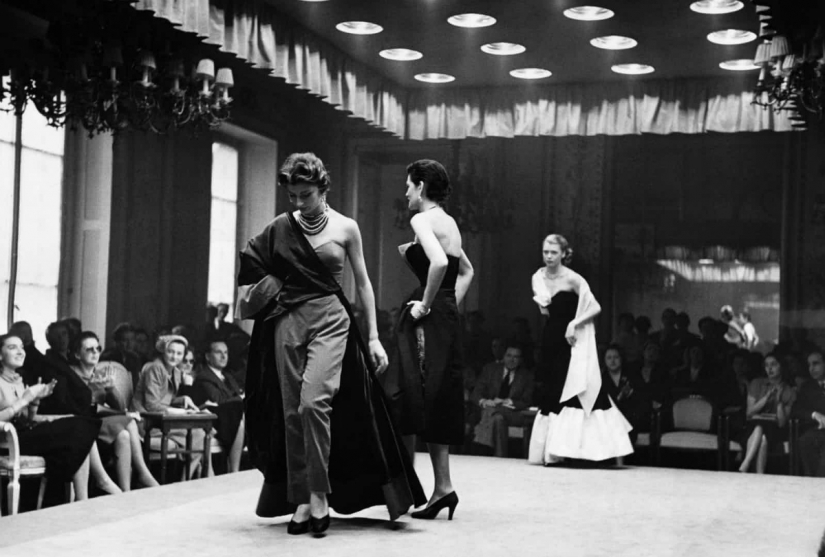
Fashion show, Florence-1951
In those years, the show was advertised as another stop for fashion magazine editors after they had attended shows in Paris and were on their way home to America. Guests were thus bribed to stay in luxury hotels and pour the best Italian wines for them in an attempt to impress them before they sat down in their editorial offices and informed the world public about whose fashion designers are still the trendsetters this season.
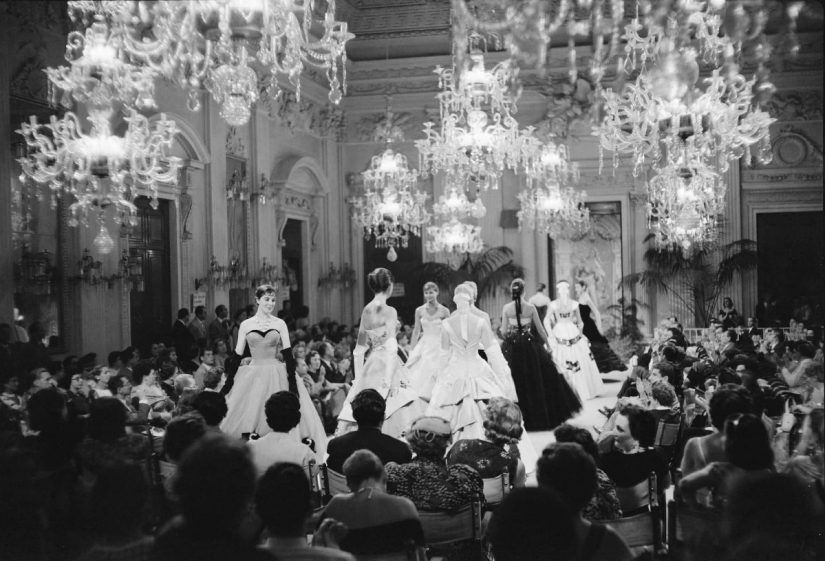
Advertisement
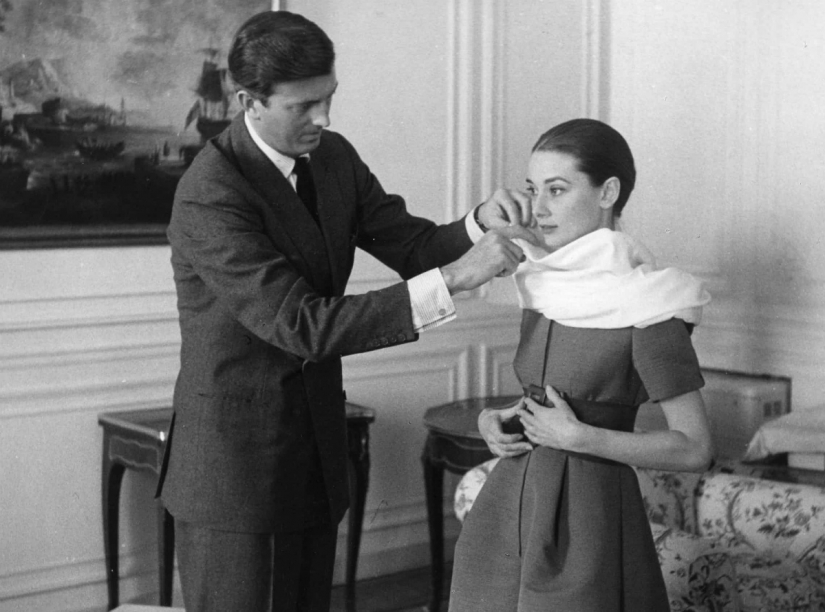
Hubert de Givenchy with actress Audrey Hepburn
In 1952, Hubert Givenchy presented his first collection. His friendly relationship with Audrey Hepburn, whom he dressed for the role of Sabrina in Breakfast at Tiffany's, was a harbinger of advertising relationships between major brands and celebrities.
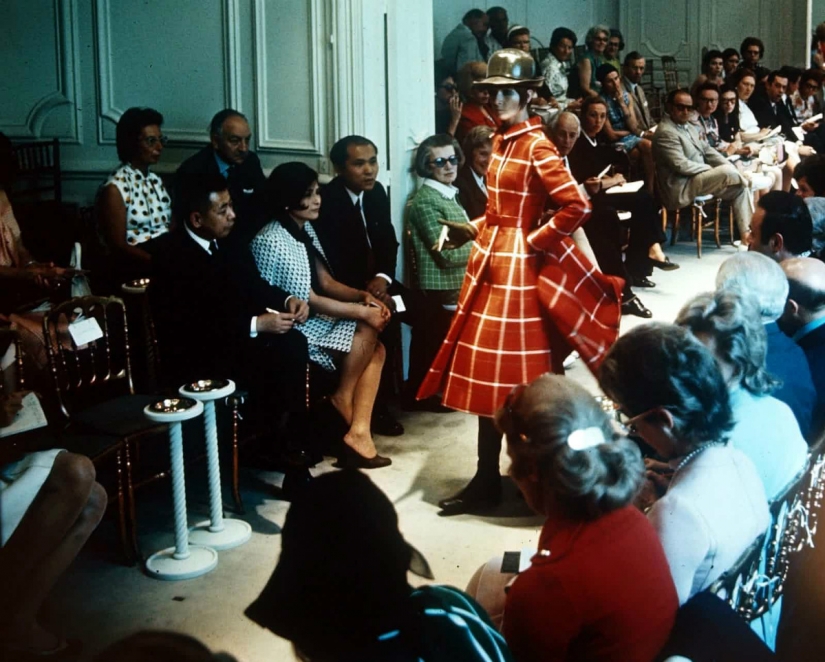
The 1970 Givenchy collection show in Paris
And in 1956, Gaby Agien, the founder of the brand Chloé, invited the press to the legendary Cafe de Flor to arrange the most informal show of the time.
The designer simply dressed the models in her collection, and they spent the evening together in the institution — talking, chatting and drinking with editors and other representatives of the fashion world.

An evening at the Cafe de Flor — 1956
Take-off pret-a-porte
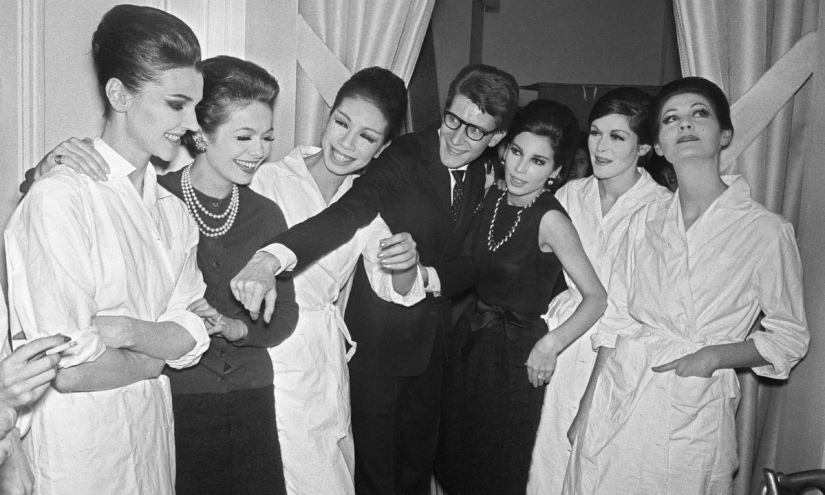
Yves Saint Laurent with models
Despite all the pretensions of high fashion, in the 60s, a group of enterprising designers, bringing together both newcomers to the scene (Yves Saint Laurent) and veterans of the fashion world (Nina Ricci), began to produce ready-made collections "pret-a-porter" (from the French prêt-à — porter-"ready to wear") two weeks before the traditional show of the haute couture collection.
So began the conquest of the mass market by fashion designers — and after it, the opening of a chain of boutiques, and mass recognition.
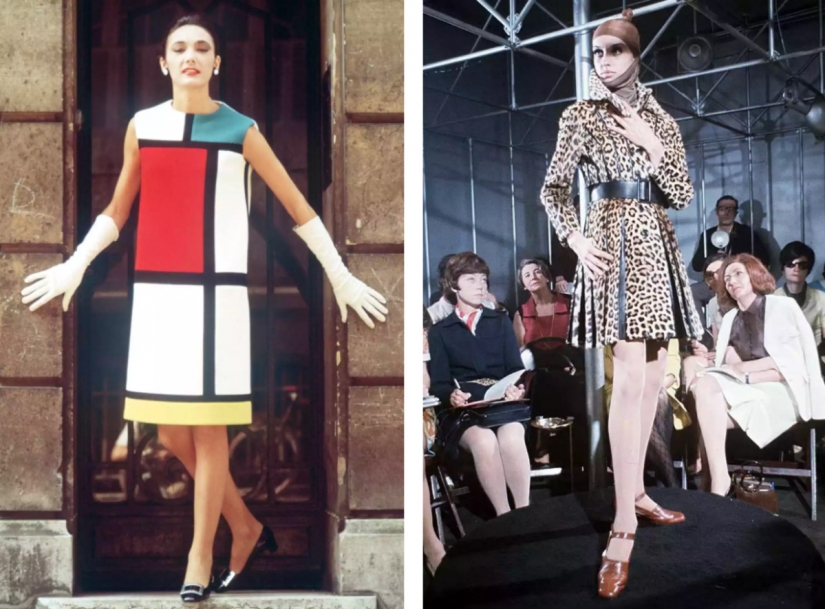
The sexual revolution of the 60s was quickly reflected in high fashion — after all, what is a concept show, if not a reinterpretation of culture through appearance? New wave designers such as Pierre Cardin and Paco Rabant boldly cut their skirts and used bright colors to appeal to young customers.

Yves Saint Laurent after the show — 1963
The podium comes to the fore
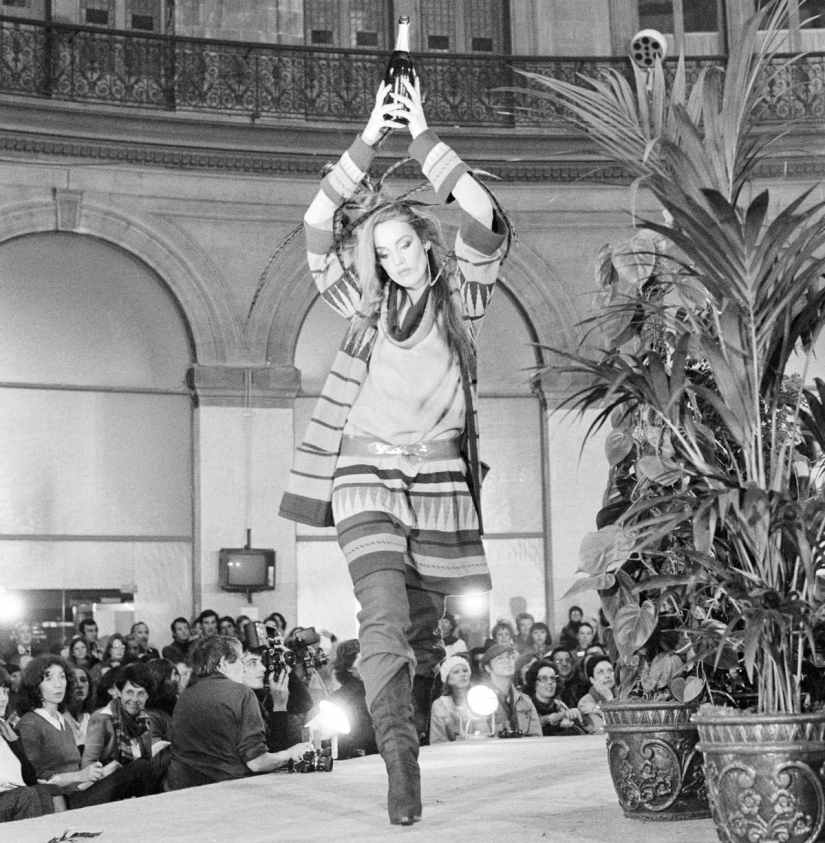
The 70s marked the age of modern fashion: pret-a-porte collections pushed haute couture, and the catwalk became the main platform for expressing design ideas. So many young designers began to appear in Paris that fashion shows were held twice a year, and in 1973, the first fashion week in Paris was officially opened.
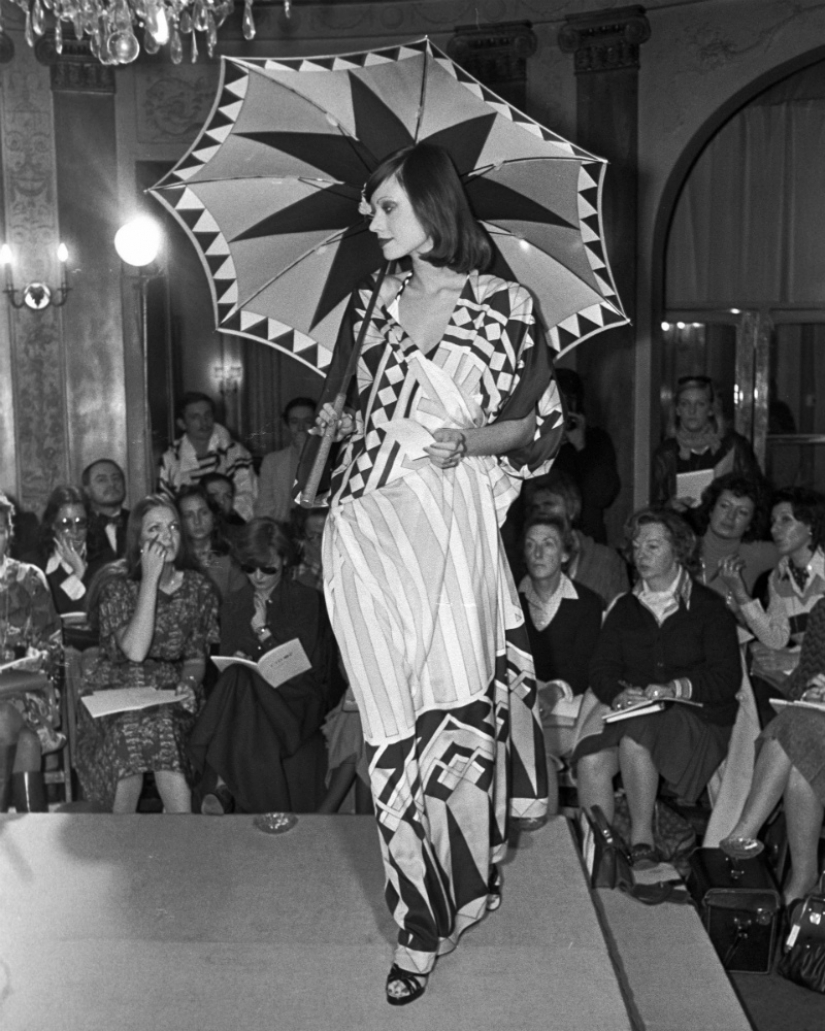
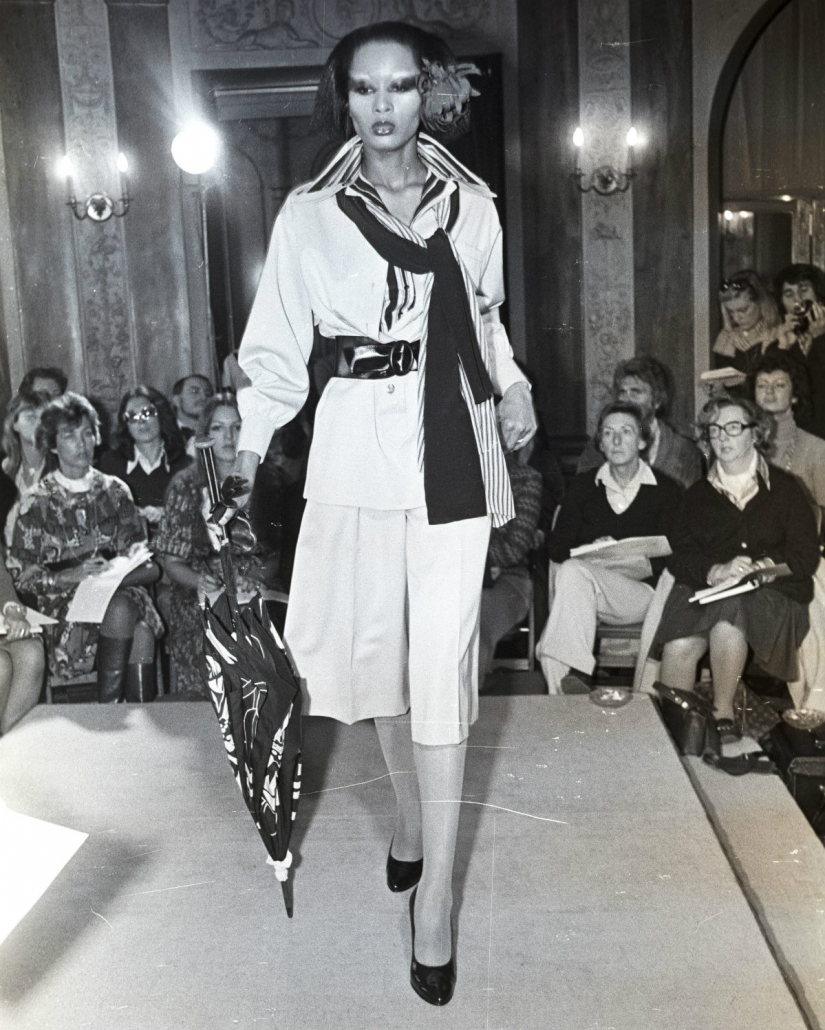
The main openings of the Paris Fashion Week were Japanese designer Kenzo Takada, Sonia Riquel and the Chloé brand under the creative direction of Karl Lagerfeld.
Renaissance of Europe
In the next decade, London became the center of creativity. Vivienne Westwood burst onto the fashion scene with her characteristic mix of historical elements, sex and anarchy. Hordes of her fans are equally fans of both punk rock and her clothes. Westwood's shows broke all the foundations, were disrespectful to the canons of "elegant" fashion and brought an element of popularity and protest to the fashion world.
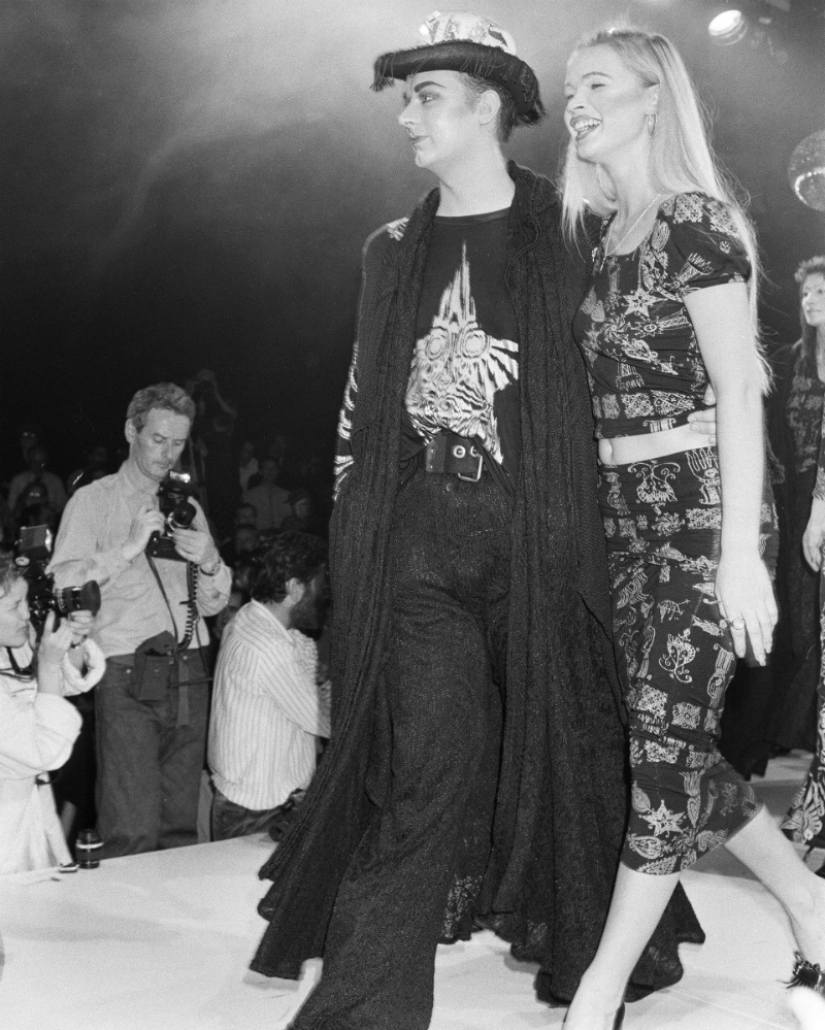

The first show of London Fashion Week-1984
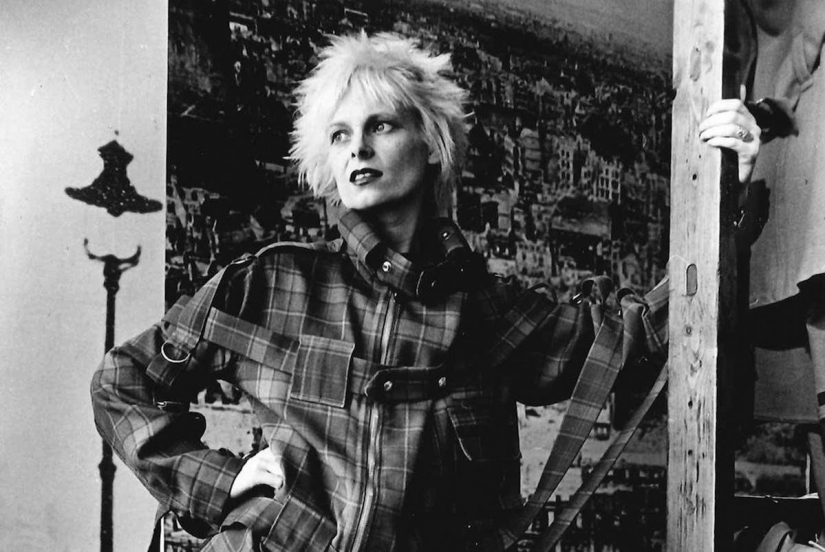
Vivienne Westwood
London became a storehouse for the press and buyers who were desperately chasing the next big hit.
Other protest-minded designers, who were rethinking the idea of a fashion show, sought to diversify the catwalk by introducing new ethnic groups, gender, age and size of models.
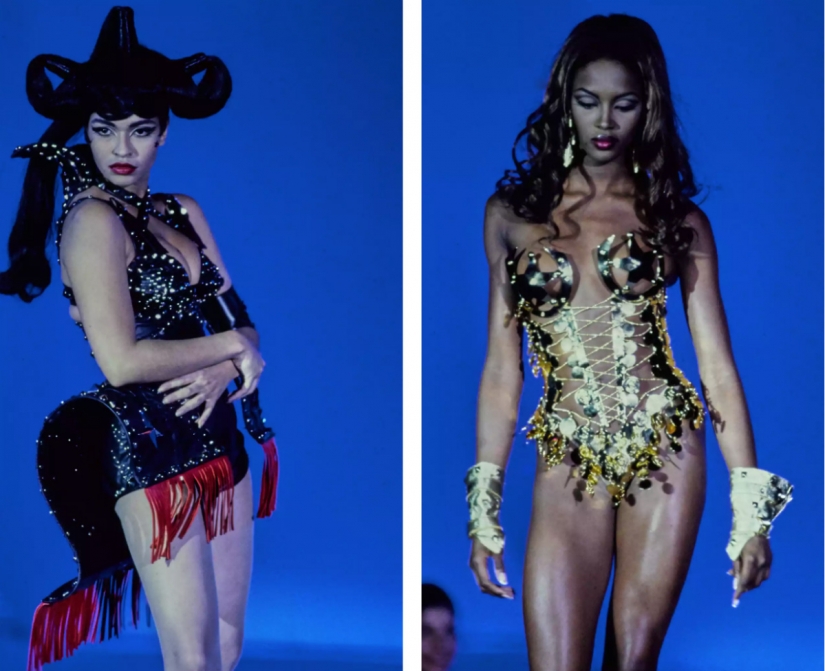
The Age of Supermodels
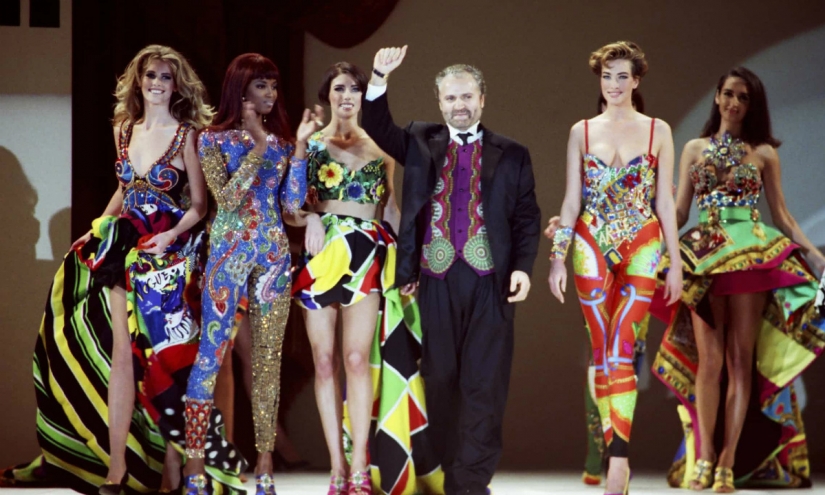
Every decade, the history of fashion has undergone a major conceptual reversal, a shift in perspective.
The 60s were an era of innovation in the presentation and competition among the leading fashion houses in Europe. 70s-the age of pret-a-port and changing mores. The 80s embodied innovation, protest and rejuvenation with the entry of fashion designers from outside Europe and America.
In the 90s-the era of the birth of mass communications, gloss and TV-all the attention turned away from designers to supermodels. It was they who became the stars of this generation, gaining unprecedented fame — in popularity they were comparable to rock stars, and leading fashion houses spent fortunes attracting them to participate in the shows of their collections.
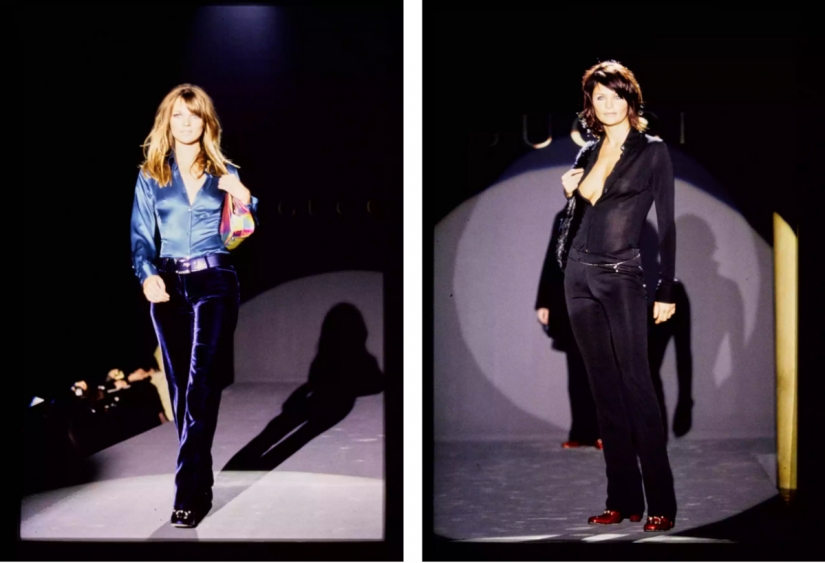
Gucci, under the leadership of Tom Ford, set a new standard for the tone of this time — here sex, status and glamour played a decisive role. Each model was illuminated by a spotlight to highlight its most important advantages, and the next key element after the clothes was the ladies ' handbag as a status symbol.
Fashion Theater
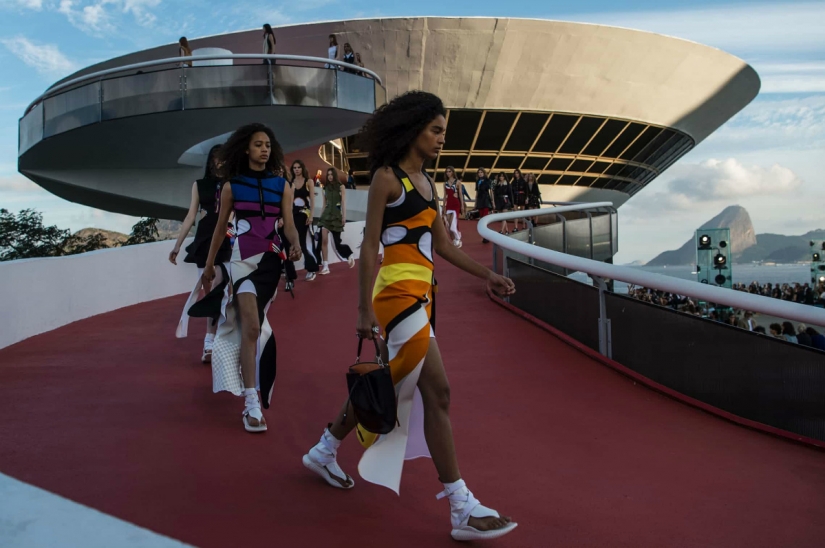
Louis Vuitton Spring-Summer 2017 collection show, Rio de Janeiro
When it seems that all the ways to impress the crowd have already been exhausted, there is always one rebel ready to make a splash again and start a new trend.
In the 90s, the Belgian designer Martin Margela became such a person — he completely flouted the established rules for holding shows, which at that time were held in specially equipped halls, museums and rented theater buildings for the show. For his next collection, he simply took the guests to a residential area on the outskirts of Paris, where he held an impromptu display right in the middle of the playground — no catwalks, no seats-inviting local families with children.

But the real turning point was the 1996 Alexander McQueen show. The British eccentric organized a show in an abandoned church, calling his collection "Dante". From that moment on, fashion shows finally began to be compared in terms of theatricality, and the location became as important as the clothes themselves.
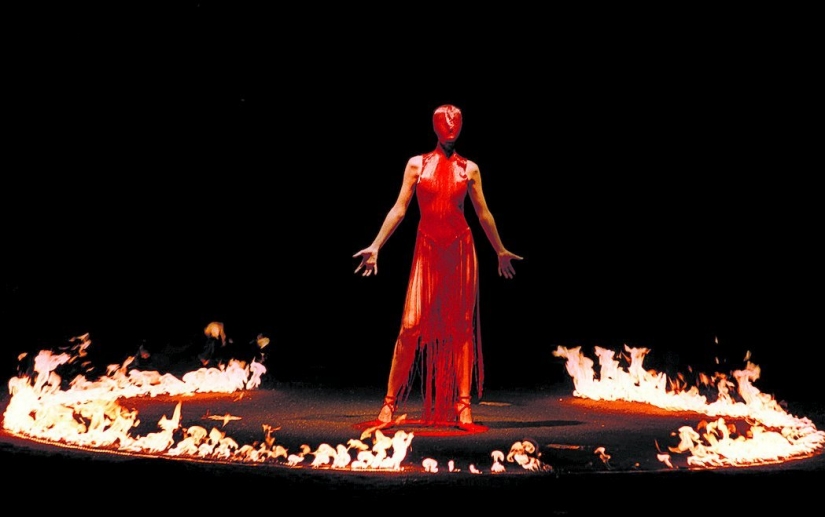
The 1998 Alexander McQueen show in London
The Digital Age
The biggest changes in fashion shows have been made by technology — although sometimes the conservative fashion industry has had to be literally pulled by the ears in the digital age. The first to present his collection online was the Austrian designer Helmut Lang in 1998.
Helmut Lang
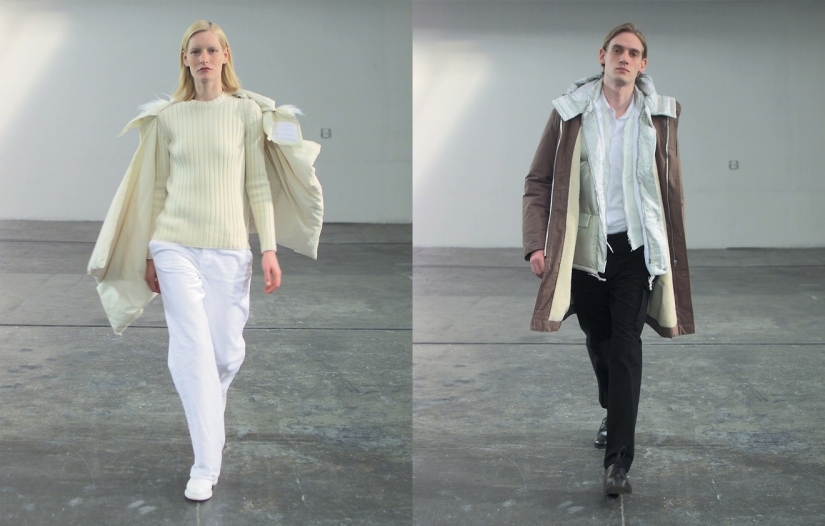
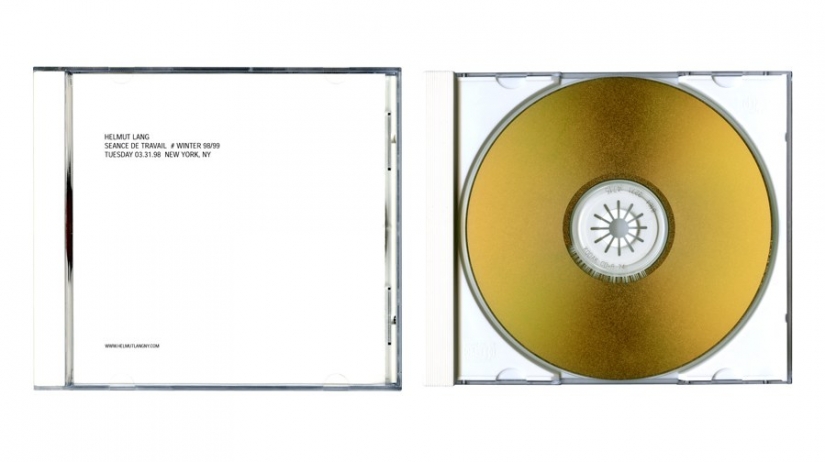
Lang's autumn-winter 1998 collection
And in 2010, Alexander McQueen became the first designer to launch a live broadcast from the show on the network. The trend set by the Briton has again snowballed. Starting next year, New York Fashion Week has started to air all its shows, and today you can watch any show through the Instagram channel.

Alexander McQueen's show " Plato's Atlantis — - 2010
Instagram today has become the main platform on which the fashion industry relies. Even the extravagant three-day cruise ship trips that fashion houses arrange for those who have bought tickets to private shows are thoughtful advertising campaigns that aim to highlight the event as much as possible on Instagram.
In 2017, Louis Vuitton took its guests on a liner to Rio de Janeiro, upon arrival presenting its grand collection on the stairs leading to the Museum of Art, and this year took visitors across the ocean to Tokyo. These trips are designed to cause a furore on Instagram. Clothing is almost irrelevant.

The fashion world has definitely become a more commercial, cold-blooded place, where competition destroys the weak, and ordinary models who are not lucky enough to attract influential fashion designers, the industry chews and spits out by the age of 30.
But fashion has not become any less extravagant. With streaming shows and endless Instagram opportunities, the scope of the show is only growing every year, and the shows themselves are now available to anyone.
So fashion, one of the most secretive and inaccessible spheres in culture, has made its way from the closed salons of Paris to the screen of your smartphone.
Keywords: History | Fashion | Catwalk | Models | Clothing | Fashion show | Fashion shows | Trend | Instagram | Dior | Chanel | Fashion clothing
Post News ArticleRecent articles

Sometimes, just one clever angle is enough to turn an ordinary shot into a puzzle. This collection features 22 photos where ...

The history of the Blanchard family happened back in 2015, but it is still being talked about. The brutal murder of Dee Dee ...
Related articles

The Indochina Peninsula, located in southeast Asia, is a favorite place for tourists all over the world. Myanmar, Thailand, Laos, ...

General Dmitry Karbyshev — one of the Soviet commanders who performed his duty to the end. This man was captured in the battle, ...

Since 1970‑ies in the neighboring cities of Rostov-on-don, Shakhty and Taganrog was sent to jail 37 serial killers, who killed ...

Oscar Wilde once said, "Life imitates art even more than art imitates life." And after viewing the photos that we have collected ...